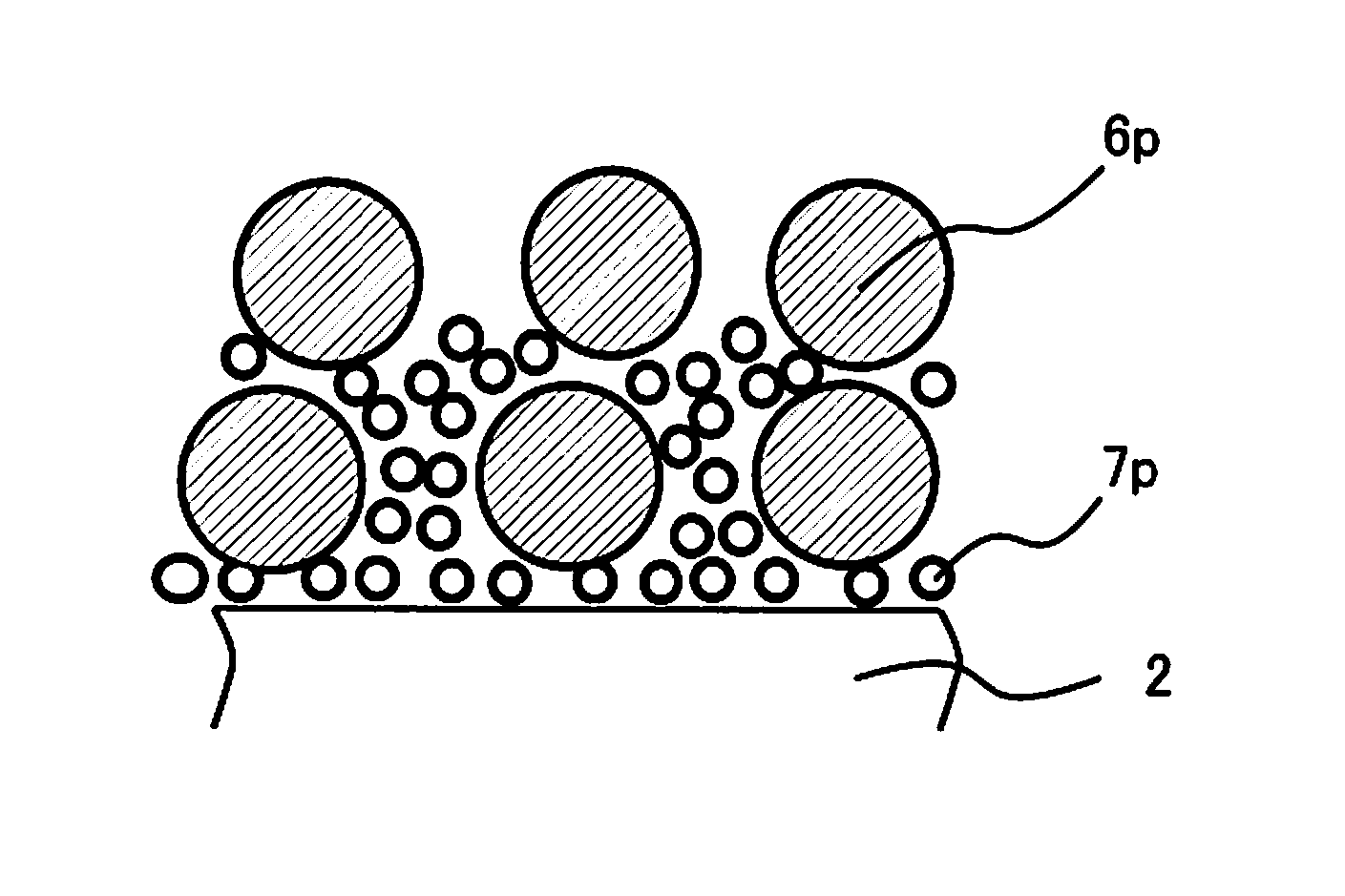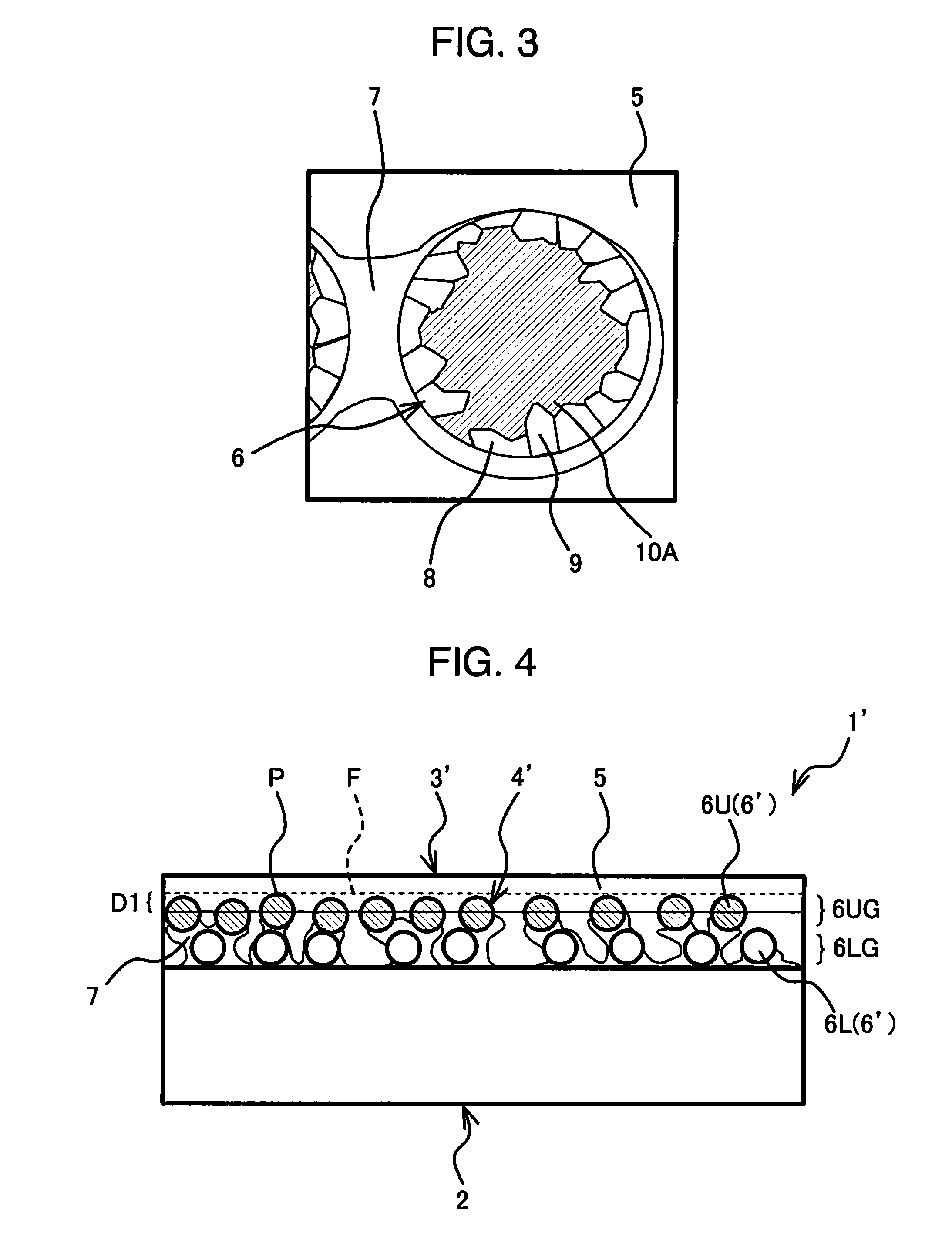Sliding member
a sliding member and sliding technology, applied in the field of sliding members, can solve the problems of insufficient loading capacity, low strength of sintered copper based sliding materials of these documents, and inability to completely prevent the corrosion of copper alloy due to organic acids or sulfur contained in the fuel, etc., to achieve high strength, high wear resistance, and high corrosion resistance against organic acids
- Summary
- Abstract
- Description
- Claims
- Application Information
AI Technical Summary
Benefits of technology
Problems solved by technology
Method used
Image
Examples
first embodiment
[0047]Next, referring to FIGS. 1 and 2, a sliding member 1 according to a first aspect of the present invention will be described. FIG. 1 is a schematic view showing a cross-section of the sliding member 1 having a sliding layer 3 including a porous sintered layer 4 and a resin composition 5 on a surface of a back metal layer 2. The porous sintered layer 4 includes Ni—P alloy phase 7 and granular steel phase 6. FIG. 2 is an enlarged view showing a structure of the granular steel phase 6.
[0048]As shown in FIG. 1, the sliding member 1 includes the back metal layer 2 and the sliding layer 3, and the sliding layer 3 includes the porous sintered layer 4 on the back metal layer 2 and the resin composition 5 impregnating pores and covering a surface of the porous sintered layer. The porous sintered layer 4 includes granular steel phase 6 and Ni—P alloy phase 7. The Ni—P alloy phase 7 functions as a binder that binds grains of the steel phase 6 with one another and / or binds the grains of th...
second embodiment
[0075]Now, a sliding member 1′ according to a second aspect of the present invention will be described.
[0076]FIG. 4 is a schematic view showing a cross-section of the sliding member 1′. A sliding layer 3′ including a porous sintered layer 4′ and a resin composition 5′ is formed on a surface of a back metal layer 2. The porous sintered layer 4 includes Ni—P alloy phase 7 and granular steel phase 6′. FIG. 5 is an enlarged view showing a structure of a granular steel phase 6U in a sliding surface side steel phase grain group 6UG. FIG. 6 is an enlarged view showing a structure of a granular steel phase 6L in an interface side steel phase grain group 6LG.
[0077]As shown in FIG. 4, the sliding member 1′ includes the back metal layer 2 and the sliding layer 3′, and the sliding layer 3′ includes the porous sintered layer 4′ on the back metal layer 2 and the resin composition 5 for impregnating pores and covering a surface of the porous sintered layer. The porous sintered layer 4′ includes th...
PUM
| Property | Measurement | Unit |
|---|---|---|
| grain size | aaaaa | aaaaa |
| thickness | aaaaa | aaaaa |
| porosity | aaaaa | aaaaa |
Abstract
Description
Claims
Application Information
 Login to view more
Login to view more - R&D Engineer
- R&D Manager
- IP Professional
- Industry Leading Data Capabilities
- Powerful AI technology
- Patent DNA Extraction
Browse by: Latest US Patents, China's latest patents, Technical Efficacy Thesaurus, Application Domain, Technology Topic.
© 2024 PatSnap. All rights reserved.Legal|Privacy policy|Modern Slavery Act Transparency Statement|Sitemap



